Democratic women in Congress created a sea of white in the House chamber during President Donald Trump’s 2019 State of the Union address, a coordinated wardrobe choice that marked the latest iteration of how female lawmakers are using clothing to highlight their visibility and telegraph intent.
Women from both the House and the Senate dressed in white, the color worn by the suffragettes, at the invitation of the House Democratic Women’s Working Group, to convey, as the group’s chairwoman, Rep. Lois Frankel told CNN ahead of the joint address, “a respectful message of solidarity with women across the country, and a declaration that we will not go back on our hard-earned rights.”
The group organized a similar all-white fashion statement for Trump’s address to Congress in 2017 to send a message that they support women’s issues; in 2018, they invited members of Congress to wear black in solidarity with the #MeToo movement.
The striking visual of Congresswomen in white at the 2019 State of the Union also highlighted the historic demographics of the current Congress, which boasts a record number of female lawmakers elected yet, roughly a fourth, according to the Pew Research Center.
Trump even referenced the milestone in the 2019 State of the Union, which earned loud chants of “USA, USA!” Though it’s worth noting that milestone is particularly true for the Democratic Party, which boasts 89 women representatives after the midterm elections versus the Republicans’ 13. The 116th Congress also included the noteworthy firsts with the election of the youngest woman, the first Native American women, and the first Muslim women ever elected to Congress.

But the women of Congress aren’t just making their mark on special occasions. They’re also using their everyday fashion on the floors of the House and Senate to send a message: what political power looks like in this country is changing.
Female lawmakers have long faced scrutiny over their clothing when the same is rarely applied to their male counterparts. A number of Congressmen also wore white ribbons as a show of solidarity with the women in white. For example, President Barack Obama once boasted that he improved his decision-making powers by always wearing the same blue or gray suit, while Hillary Clinton was once asked a question about a “hair and makeup tax” that adds extra time to women’s mornings.
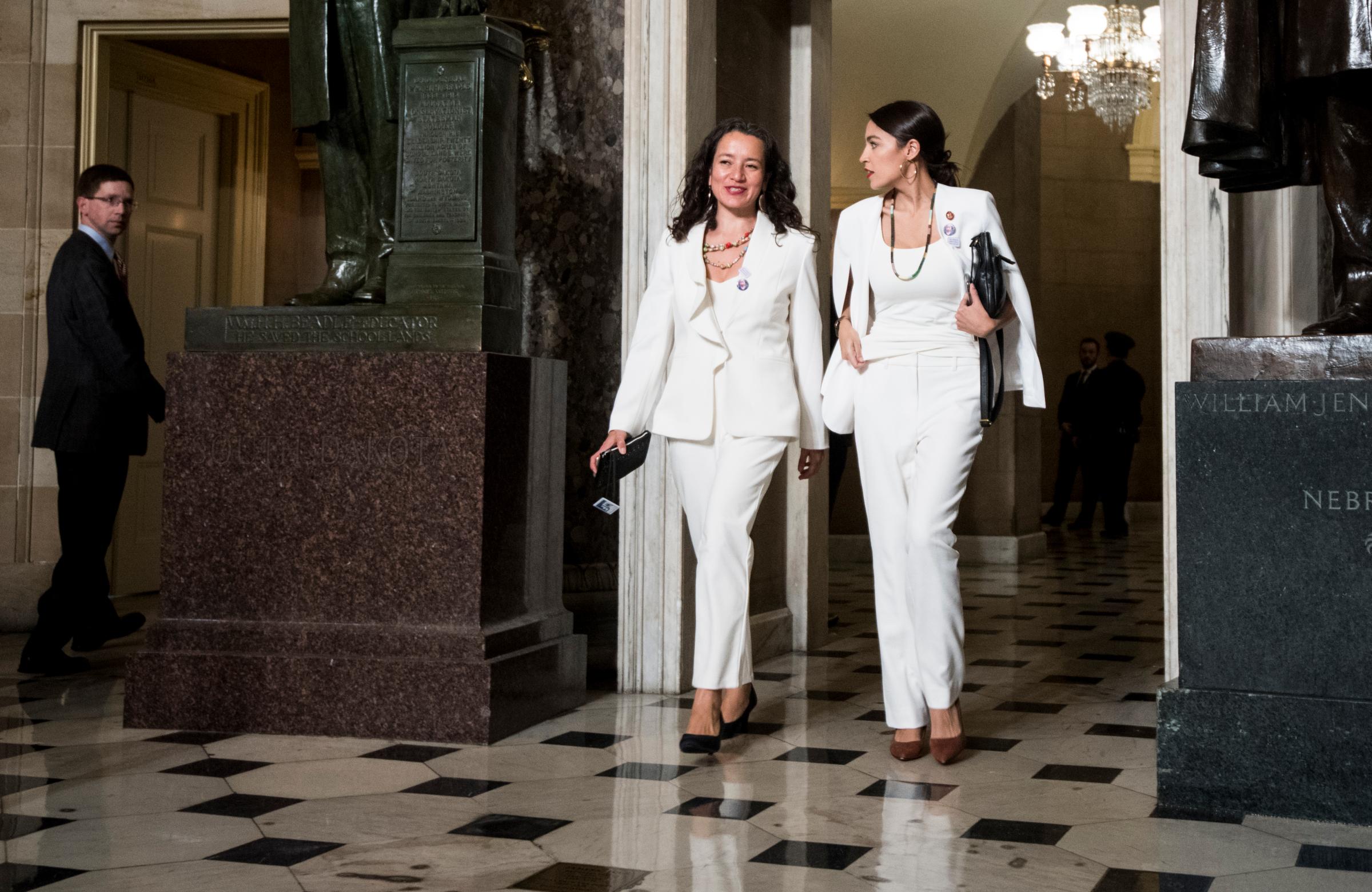
In the past, women in Congress fought simply for the right to the same boring clothes — pushing for the right to wear pantsuits and more business-casual option. But in 2019, Congress voted to permit religious headwear on the floor for the first time in 181 years on the same day that the very first two female Muslim congressional representatives in history took office. And regularly, members of the current crop of lawmakers are using boldness to make a statement.
Read More: How Donald Trump’s Clothes Reinforce His Campaign
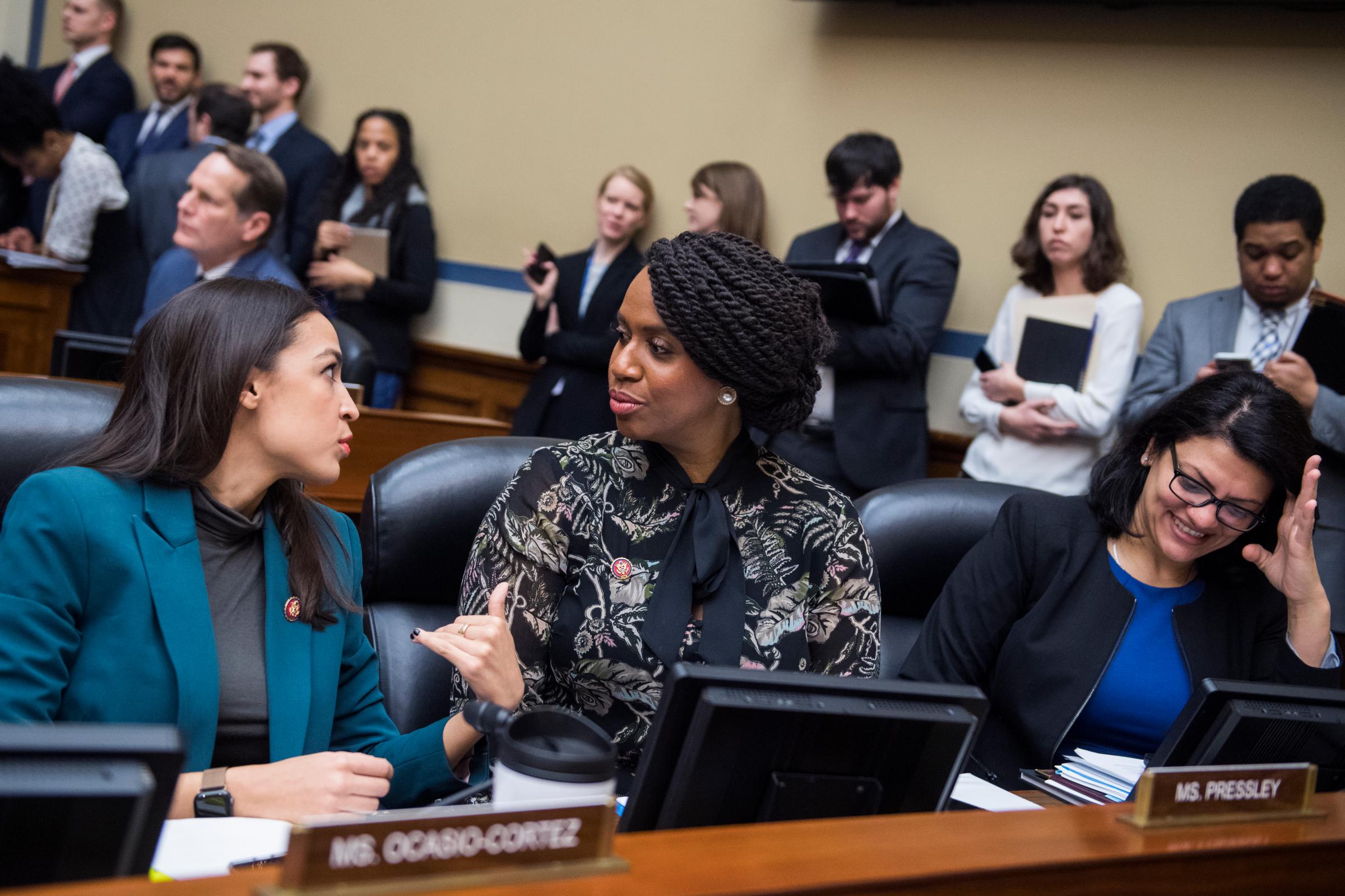
That boldness can help women wield power, says Dr. Rhonda Garelick, professor of Fashion Studies at Parsons School of Design in New York City, who points out that fashion is a nonverbal form of communications.
“We have to accord women their power with what they are dressed with what mode of communications women’s fashion gives them,” said Garelick, who’s writing a book about fashion and women’s culture in presidential politics. “It’s crucial not to reduce women to their appearance, that is all too easily and all too frequently done and a huge, sexist mistake. But that does not mean that we can’t acknowledge, appreciate and interpret fashion as part of their communications.”
In fact, Garelick argued that male politicians’ fashion should be scrutinized even more than it is, precisely because it is so uniform.
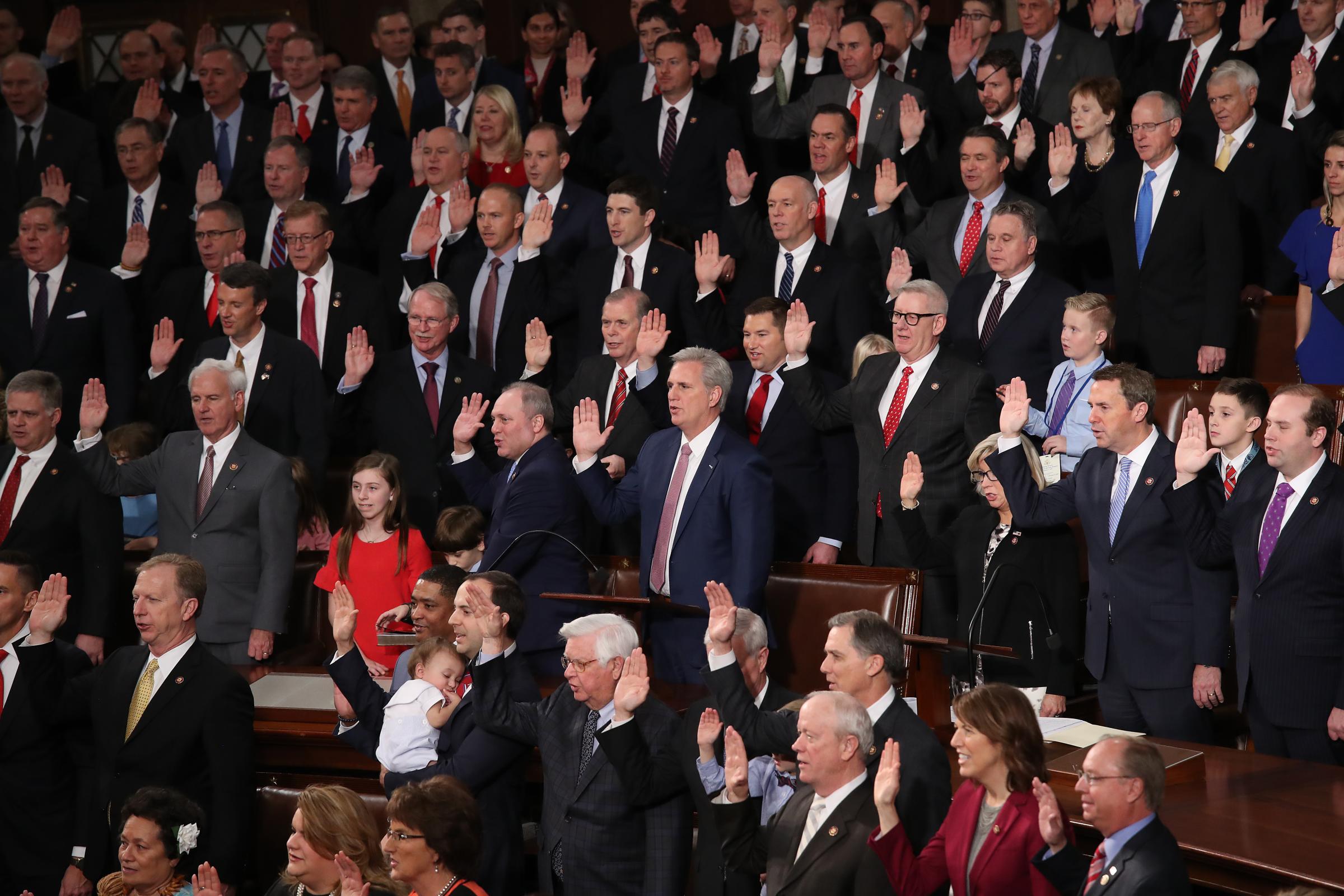
“The so-called sober, nondescript look of men also connotes power and how much more it takes for example, a young woman to dress in a way that speaks to power, when her male colleague simply has to put on a dark suit. What we’re talking about is the result of massive, historic inequities,” she said
Read More: Rand Paul Is the Most Interesting Man in Political Fashion

Speaker Nancy Pelosi set an example when she wore a bold fuchsia sheath dress for her swearing in, drawing a contrast to the traditionally dark suits worn by men.
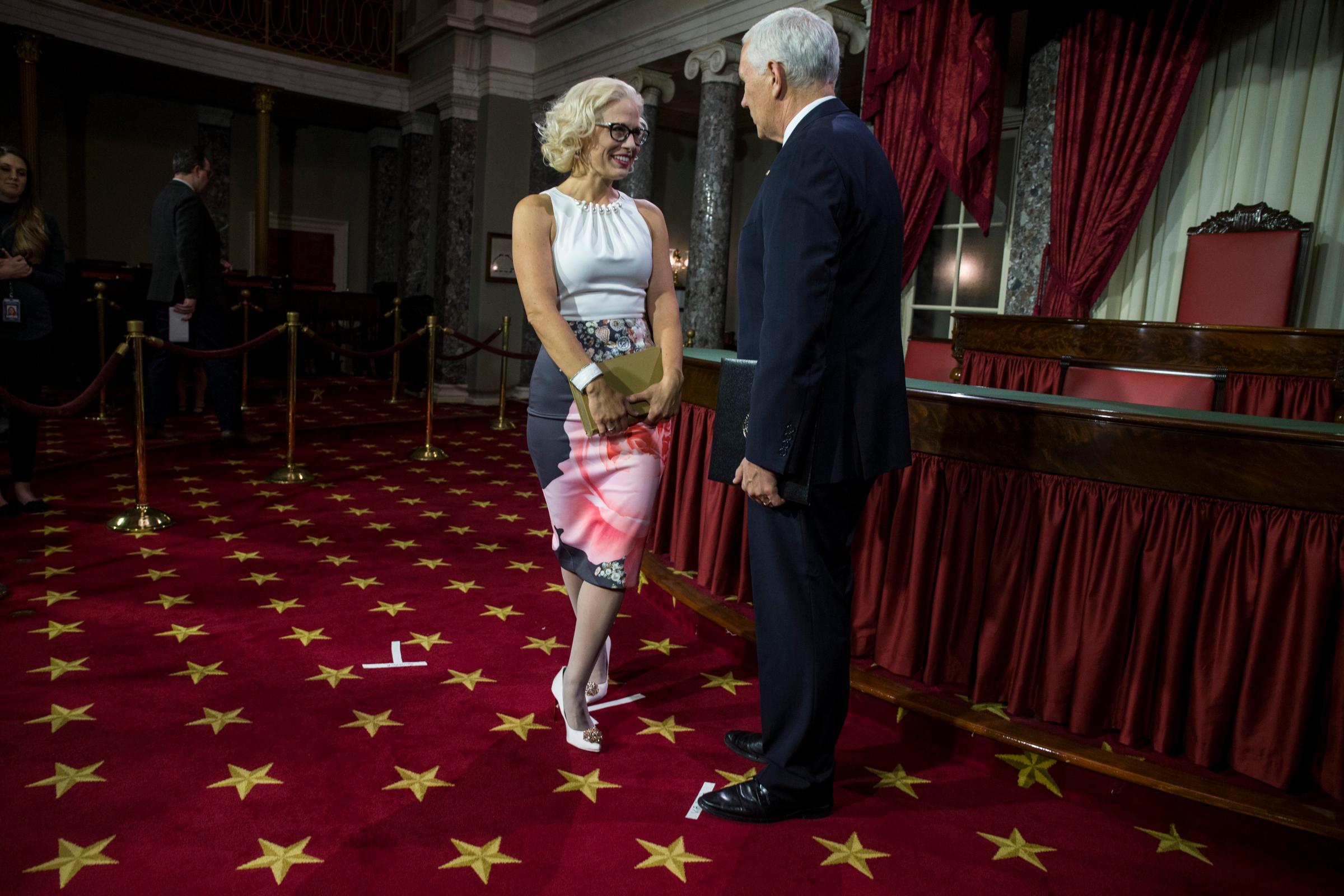
Democratic Sen. Kyrsten Sinema, the first openly bisexual member of the Senate, attended her swearing-in wearing a floral pencil skirt, a sleeveless pearl-embellished top and a pair of jeweled white stiletto pumps. Sinema paired the look with an impeccably curled bob, red lipstick, a gray faux fur stole, a glittery polka-dot handbag, and a pink jacket — an unapologetic display of overt femininity that Slate’s Christina Cauterucci wrote was associated with the pin-up style historically associated with queer femme identity.
Sinema made headlines during her Congressional appearances after being sworn-in with her convention-defying tall, knee-high or over-the-knee boots paired with colorful print dresses, a notable alternative to the standard neutrally colored dresses and sensible heels often seen on female politicians.
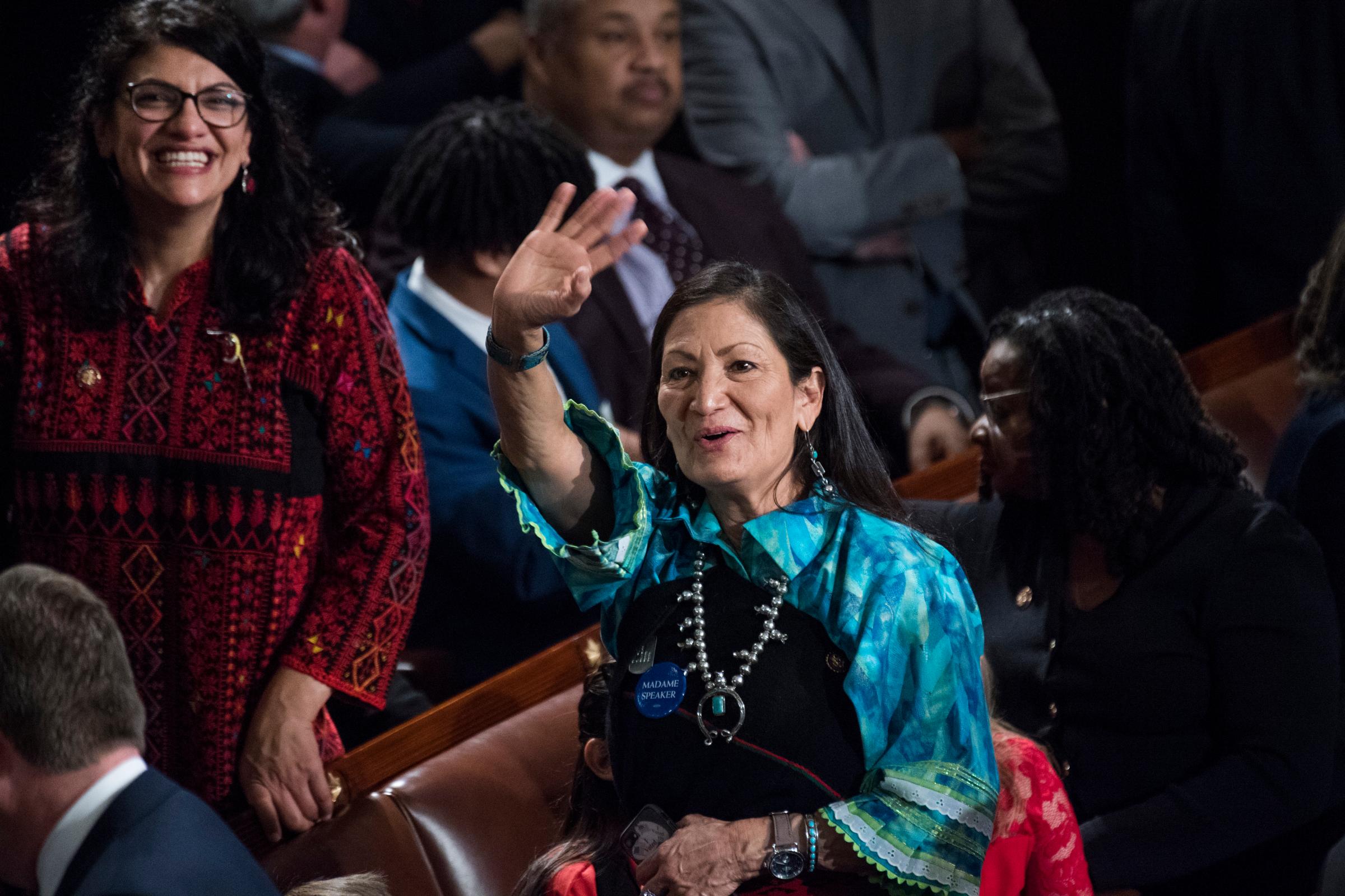
For other newcomers in Congress, a bold fashion choice is a natural extension of their own identity.
Democratic Rep. Debra Haaland (D-NM), one of the first Native American women to be elected to Congress, wore turquoise jewelry and a traditional Pueblo dress and boots to her swearing-in, while Democratic Rep. Rashida Tlaib wrote about her decision to wear a Palestinian thobe, like the ones her mother hand-made while she was growing up, telling ELLE readers to “show everyone who you are, your heritage and what you stand for.”

Democratic Rep. Ilhan Omar’s religious beliefs made a mark on Congress even before she was sworn in.
When she attended the beginning of the 116th Congress wearing her hijab and swearing in on the Qur’an, Omar became the first member of Congress to wear headwear of any kind during a session, ending a 181-year ban. Omar honored the suffragettes at her swearing-in by wearing all-white, opting for a black manicure, a beauty choice not usually seen in Congress.
These changes have not come without criticism, something that Garelick chalks up to insecurity.
“A lot of these critiques that these younger congresswomen are getting for their clothing or their makeup or their jewelry, is coming from a place of discomfort certain people feel when they encounter an appealing younger woman in the halls of power where they did not expect to find one,” she said.
Take for example, Democratic Rep. Alexandria Ocasio-Cortez, whose style choices — and the ensuing dialogue about them — have gone viral multiple times since she was elected to represent Queens and her hometown of the Bronx.
Two instances stand out in particular, though on different sides of the spectrum; the first, was when conservative journalist Eddie Scarry wrote in a now-deleted tweet about Ocasio-Cortez, “that jacket and coat don’t look like a girl who struggles,” seeming to imply that Ocasio-Cortez’s professional clothes belied her personal story of struggling financially.
Ocasio-Cortez, however, didn’t shy away from the conflict, taking to Twitter to argue that the issues with her clothing actually stem from the idea that “women like me aren’t supposed to run for office — or win.”
Ocasio-Cortez hasn’t shied away from openly using and talking about fashion as a way to reach her constituents either. For her swearing-in, she wore an all-white suit, hoop earrings and red lipstick, each of them chosen with careful thought and meaning. As Ocasio-Cortez explained in tweets, the suit was white to honor the female politicians who came before her, like Shirley Chisholm who became the first black woman to ever be elected to Congress in 1968, while the hoop earrings and red lipstick were an homage to Supreme Court Justice Sonia Sotomayor, who also hails from the Bronx.
As Democratic Rep. Ayanna Presley memorably asked in her victory speech after winning her House seat in September last year, “Can a congresswoman wear her hair in braids, rock a black leather jacket and bold red lip?”
The answer appears to be yes.
More Must-Reads from TIME
- Donald Trump Is TIME's 2024 Person of the Year
- Why We Chose Trump as Person of the Year
- Is Intermittent Fasting Good or Bad for You?
- The 100 Must-Read Books of 2024
- The 20 Best Christmas TV Episodes
- Column: If Optimism Feels Ridiculous Now, Try Hope
- The Future of Climate Action Is Trade Policy
- Merle Bombardieri Is Helping People Make the Baby Decision
Write to Cady Lang at cady.lang@timemagazine.com